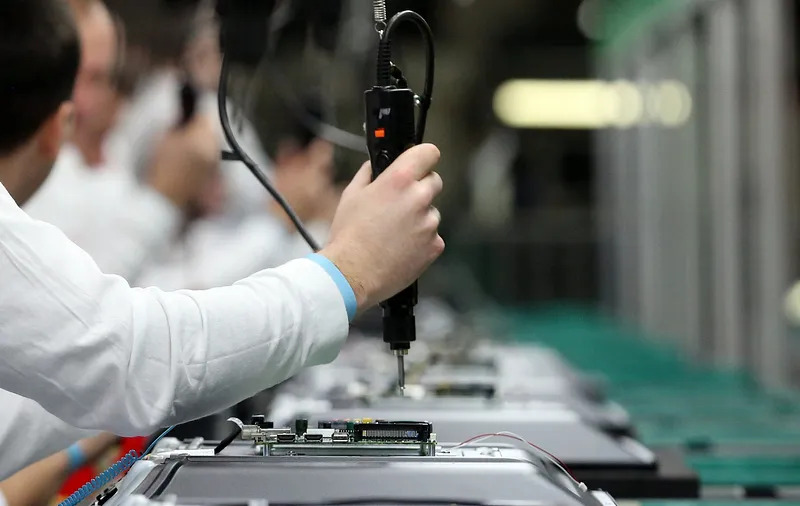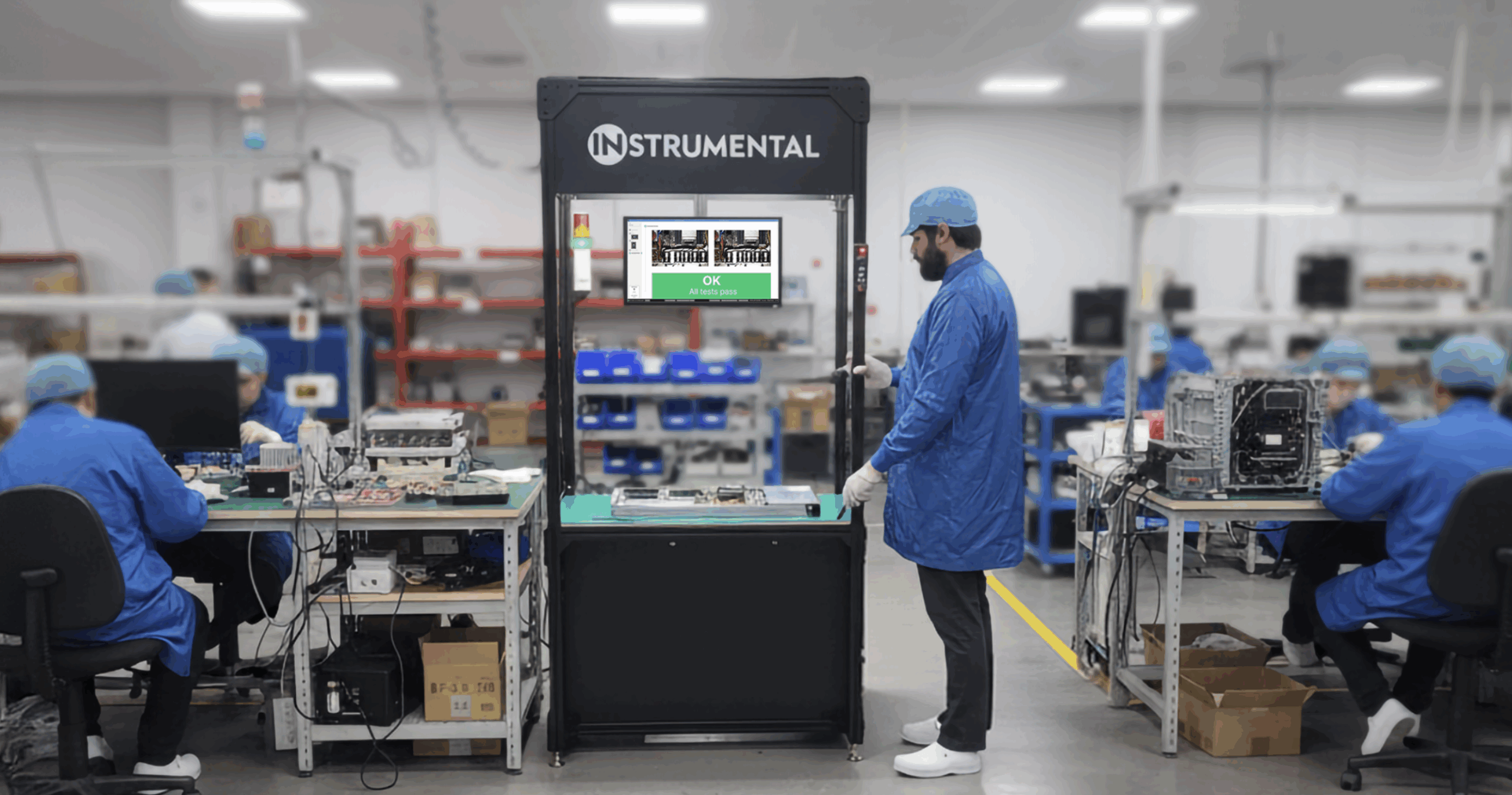A version of this article was originally published in Forbes.
Each year, electronics brands evaluate their options for manufacturing partners for the upcoming year’s programs. Even companies with well-established partnerships seek bids and potential new relationships every program. Everyone is seeking more: better relationships, better factory, lower costs, and perhaps a better experience of bringing a new product to life. While the manufacturing world typically moves slower than other industries, in 2019, the changes are happening quickly. The very nature of manufacturing itself is shifting, driven by technology, changing attitudes, and frankly, the financial implications of tariffs on goods imported to the United States from China. As the CEO of a company that provides manufacturing optimization technology to electronics brands, from 50 person startups to companies on the Fortune 50, I interact with senior engineering and operations leaders who are driving critical decisions for their companies on a daily basis. From these interactions, I’ve distilled three trends driving choices in electronics manufacturing in 2019.
1. Made in China?
While electronics brands have been threatening to do it for years, this is the year that it seems like brands are finally starting to move their final assembly out of China. Brands that have built in China for years, some of whom even own their own factories in China, have spent the summer and fall moving their supply chains out of China and setting them up in new places in time for 2019 programs.
Given its many advantages, China has been the default choice for electronics manufacturing for decades. Shorter supply chains are better: minimizing the number of hand-offs and reducing the length of the supply chain reduces the risk of costly delays. China enables building everything at just a few suppliers, since most can do more than one manufacturing process, all with minimal shipping and customs friction.
In recent years, China’s seemingly endless supply of relatively cheap labor is drying up. As demand for products has gone up, so has the demand for labor and ultimately the cost of that labor. Even with increasing costs, leaders at leading electronics brands tell me quality has gone down. Turnover in electronics manufacturing is notoriously high – as much as 15% week-over-week. For companies trying to ramp new products around Chinese New Year or Golden Week in the fall, the industry-accepted rule of thumb is to plan for no more than 50% of a trained manufacturing workforce to return after the holiday. The high turnover, diminishing quality, and higher cost of human labor has been a major driver for manufacturing automation in recent years, and has led to a large concentration of automation expertise throughout China.
While the labor issue was enough to inspire grumbling among electronics brands about the long-term viability of manufacturing electronics in China, it was the U.S. import tariffs on Chinese goods that finally tipped the scale. I’ve been hearing from my clients for years about their plans to move mature product lines to India, and many have done it. But not development. Development of new products takes a special kind of engineering process and expertise, and for those with infrastructure and established partnerships in China, it had always seemed too risky to do it anywhere else. That changed this year: I’ve seen multiple multinational electronics brands diminish China in their manufacturing strategy. This time around, when the question came up as it does every year about which manufacturing partners to request proposals and quotes from, many senior operations leaders choose to take on more risk in the execution of a new product in favor of lower costs. This year, many of these companies will run their grand experiments in India, Malaysia, Thailand, Vietnam, and the Philippines.
This is a fascinating move that will have ramifications throughout electronics manufacturing. First, most of these multinational companies have China-based employees and U.S.-based manufacturing teams full of Mandarin speakers. For years, if you’ve wanted to be part of the cutting edge in electronics manufacturing, you did that on the ground in China. Now these companies face several new challenges: working in multiple countries simultaneously, often without embedded local teams (at least to start), and with new local factory teams with whom they’ve never built before. The risk is immense – and in new product development, risk usually manifests itself in the form of launch delays and reduced quality – something I suspect we as consumers will see more of in 2019.
2. Driving metrics that matter
Given the tumult in the supply chain, companies remain focused on driving the metrics that matter. As discussed, they’re moving their supply chains out of China in order to maximize margins. They’re continuing to evaluate automation and, for the first time, are considering premiums for “super-human” automation versus just cost-cutting in the form of headcount reduction. Finally, I am seeing new metrics on quality take hold, specifically regarding customer feedback across social media, customer forums, and customer reviews on ecommerce marketplaces like Amazon, Best Buy, and more.
For the product lines that are staying in China this year, reducing headcount, and therefore the cost to build, with automation will continue to be a key trend in 2019. While automation is hardly a new trend in electronics manufacturing, if you’re from outside of the industry, you may be surprised to learn that it’s not nearly as automated as you might think. While circuit boards have been assembled by robots for years, most of the final assembly of the electronics you use everyday have been touched by tens, if not hundreds, of human hands: placing components, screwing in screws, routing wires and cables. Most brands have a love-hate relationship with automation. More specifically, the engineers hate it because it gets in the way as they try to iterate to solve problems, and the operations teams (sometimes) love it when it can successfully save money or increase yields.
Besides automation, I’ve seen other margin-boosting changes happening. Electronics brands that own their own factories have cut costs by moving some manufacturing out of their own factories because they can get more competitive pricing on the open market. A wider variety of electronics brands have realized that “superhuman” abilities provided by automation equipment or other technologies are worth paying for – even if the cost is greater than the operators being replaced. That sounds obvious in retrospect, but represents a shift away from doing what is necessary to get the product out the door to finding new ways to cut costs while keeping quality high.
Another key trend in driving metrics that matter is a growing awareness that customer marketplaces are not just a source of data for marketing teams, but can be a valuable source of product and quality feedback. While not all organizations have woken up to this, Amazon reviews and similar will continue to become a popular measuring stick for engineering and quality organizations in 2019. A senior leader at a large networking products company told me, “If a new product it has less than four stars [on Amazon], and we don’t fix it in 90 days, the product is dead.” Another told me, referring to the consumer product line he leads, “The [Amazon] reviews have slid from 4.3 stars to 3.7 stars in the past 12 months. We don’t know why yet, but we know we have to fix it.” The reason these reviews are so valuable as a metric is that when mined properly, they contain critical information about potential issues that escaped the quality processes in place in the factory – or dark yield. Knowing that a dark yield issue exists enables an engineering team to put in a test to catch those issues in the factory. The result is fewer customer returns, fewer unhappy customers recommending competitors on Amazon, and ultimately a savings that often adds up to tens or hundreds of millions of dollars of savings, per program.
3. The search for better support, teams, and new technology
With all that is going on in the previous two areas, in 2019 teams are facing new challenges. They are optimistically looking for better support, partners, and new technologies that can help them to solve these challenges. Many are seeking new partners with new ways of thinking to solve old problems. Electronics brands have increasingly high expectations around manufacturing data traceability, key metrics visibility, and ultimately transparency. They are seeking manufacturing partners who in the worst case, won’t give them pushback for wanting to implement the technology to do this, and in the best case, will embrace this technology and use it to improve their own core business metrics.
Factories themselves are getting squeezed in this changing market, and competition among Chinese factories in particular is going to increase if demand for Chinese electronics manufacturing adjusts. Factories that have relied on transactional relationships with their electronics brand partners will not be in the best position to retain business if they cannot offer anything beyond the commoditized service of building products. Differentiation, especially among smaller factories that cannot rely on name recognition, has become a higher priority moving into 2019. Those factories are looking to offer what the big players cannot: proactive reporting, working like teammates versus as a vendor, and the use of value added technology tools.
Any discussion of technology trends in manufacturing in 2019 would be remiss without touching on Industry 4.0. While I don’t disagree that Industry 4.0 is the future that we’re all working towards, I think the emphasis and attention is a bit unwarranted given many technologies being piloted today often aren’t delivering on their promises. There are very real improvements, even very simple ones around traceability and visibility, that both electronics brands and their manufacturing partners can make to drive better business outcomes today while laying the foundation for the advanced technology to come. My hope is that 2019 is the year they take advantage of them.
Related Topics



